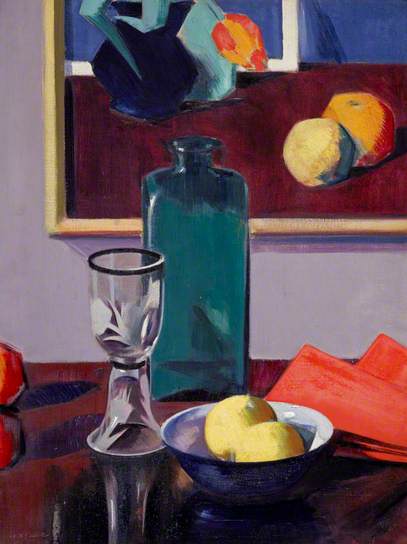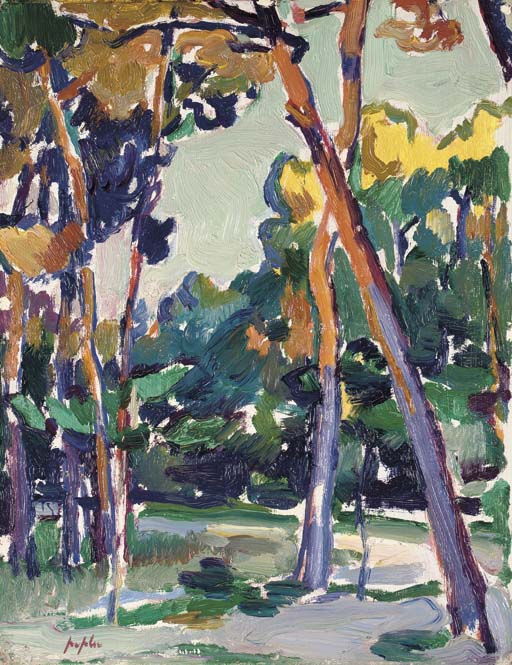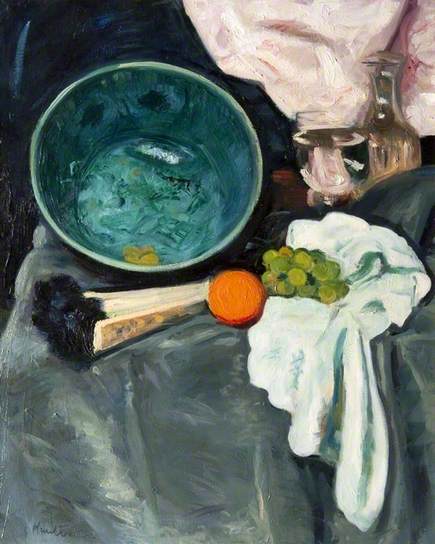History of the Movement
The Scottish Colourists currently enjoy a position of high regard; they are among Scotland’s most cherished artists, beloved of gallery-goers and collectors alike. The buoyant market for the Colourists ensures that in salerooms they command high prices, and they have been the subjects of numerous well-received solo and group retrospective exhibitions. The popularity of the Colourists is unsurprising; their simple, vibrant and engaging works combine avant-garde continental influences with a joyful ‘art for art’s sake’ character in a readily accessible idiom. The Colourists have, however, not long enjoyed such unalloyed admiration. Roger Fry, the artist and critic responsible for introducing British audiences to avant-garde French art, pointedly chose not to include works by the Colourists in the British section of the Second Post-Impressionist Exhibition in 1912. Similarly, 75 years later in the Royal Academy’s sweeping survey exhibition of twentieth-century British art (1987) no canvases by the Colourists were featured.
The term ‘Scottish Colourists’ refers to four painters, S. J. Peploe (1871—1935), J. D. Fergusson (1874—1961), G. L. Hunter (1877—1931) and F. C. B. Cadell (1871—1935). This collective designation, however, was not coined until the late 1940s, by which time three of the principle artists – all except Fergusson – were dead, and has only recently achieved widespread currency. The designation ‘Scottish Colourist’ is also misleading, suggesting an artistic unity of purpose and collectivism, which does not accurately describe the tenuous relationship between the artists or the heterogeneity of their collective output.
The term in other words tends to obscure the wide variety of stylistic influences and approaches developed and employed by the artists. Regardless of what the collective appellation may suggest, the four artists were not a particularly close-knit group, neither did they work collaboratively towards a common goal. During their lifetimes the artists only exhibited together three times, and each of them developed individual methods, characteristic styles and divergent approaches to a wide variety of subject matter.
Despite their individual qualities as artists there is a slight degree of common ground in the artists’ biographies and artistic development. All of the artists were born into comfortable middle-class Scottish families; Peploe, Fergusson and Cadell in Edinburgh and Hunter, whose family later emigrated to California, was born in Rothesay on the Isle of Bute. The artists were all born in the 1870s, a decade in which artistic activity in Scotland was thriving; the exhibitions at the Royal Scottish Academy were showcasing increasing numbers of canvases by ever more artists, and Glasgow was growing in importance as an artistic centre in its own right. During the 1870s and 1880s historicism, scenes of rural life were the backbone of Scottish artistic production. During the artists’ formative early years in the late 1890s, the ‘Glasgow School’ was in its mature phase, alongside the continuing prominence of a Realist strand in Scottish art which favoured the depiction of quotidian rustic scenes with a direct, lyrical straightforwardness of vision. Three of the artists undertook their preliminary training in Edinburgh; Peploe and Fergusson enrolled at the Trustees’ Academy, and Cadell attended the Royal Scottish Academy Life School. All three artists however, were disenchanted with the conservatism of the syllabus taught by these institutions. All three emerging artists looked instead to the very different artistic and cultural milieu of Paris for inspiration.
In her study of the cultural connections between Edinburgh and Paris in the late nineteenth and early twentieth centuries Sian Reynolds has counterpointed Paris’s thriving, bohemian artistic scene with ‘Edinburgh’s reputation at the turn of the century’ noting that it was that of ‘a staid, climactically bracing, Presbyterian and puritanical city, bristling with well-frequented churches, and peopled with ministers, lawyers, academics and doctors,’ concluding humorously that ‘Morningside was never likely to be mistaken for Montparnasse.’[1] Reflecting on the artistic awakening inspired by the progressive artistic milieu of Paris, Fergusson writes ‘something new had started and I was very much intrigued. But there was no language for it that made sense in Edinburgh and London – an expression like the ‘logic of line’ meant something that it couldn’t mean in Edinburgh.’ Hunter, who was largely self taught during his youth on the west coast of North America was also receptive to contemporary art in London and Paris, but his career developed in a more haphazard trajectory and the exact course of his artistic development remains somewhat of an enigma.
All of the artists absorbed, without slavishly appropriating, the influence of disparate French painters including Manet and the later Impressionists, Cezanne, Matisse and the Fauves. All of these influences subtly shaped their output; but they also drew heavily on their Scottish artistic heritage. Their common interest in subtle modulations of light and shade and the capturing of intangible atmospheric effects through painting en plein air derived from the Impressionists. Their distinctive planar brushstrokes and interest in crisply structured compositions derive from Cezanne and the expressionistic possibilities of bold and brilliant colouring developed by Matisse and the Fauves is in evidence throughout their works. Despite these shared influences however, each of the artists developed their own distinctive styles.

Paintings of Iona by F.C.B. Cadell 1883-1937 and S.J. Peploe 1871-1935 by Philip Coupe
Cadell
Francis Cadell was born in Edinburgh on 12 April 1883 at 4 Buckingham Terrace... Read More
Peploe
Peploe was born at 39 Manor Place, Edinburgh on 27 January 1871, the son of Robert Luff Peploe... Peploe
Hunter
[George] Leslie Hunter was the only one of the Colourists who was not associated with Edinburgh... Read More
